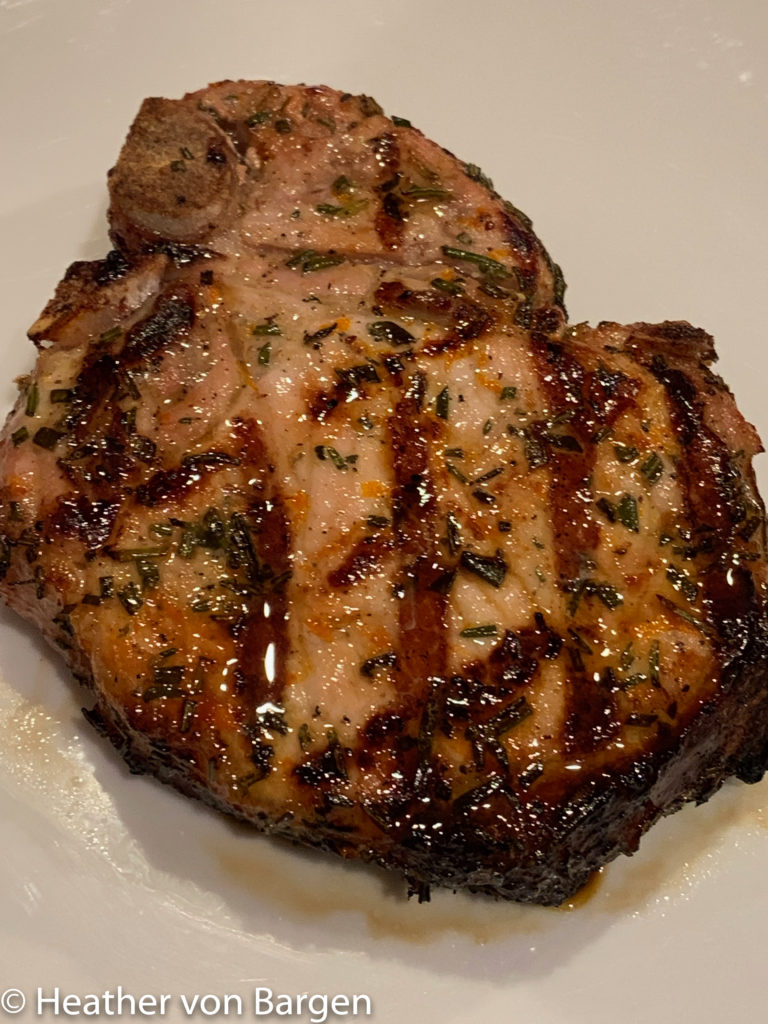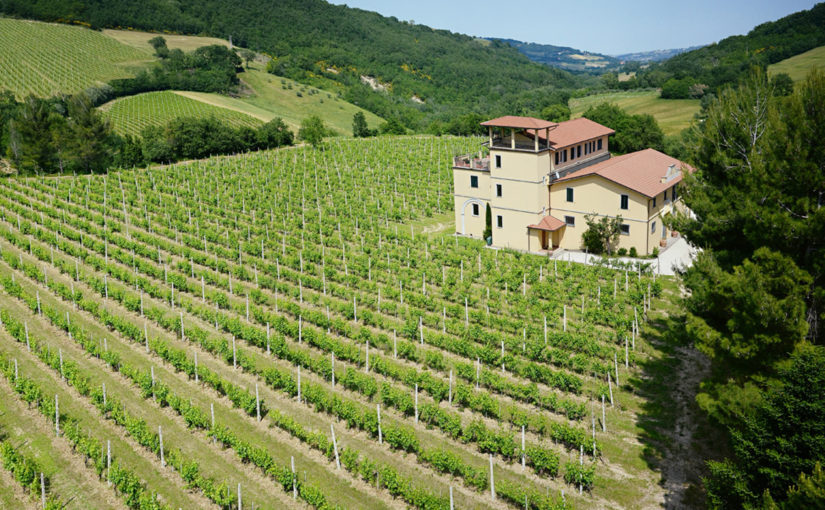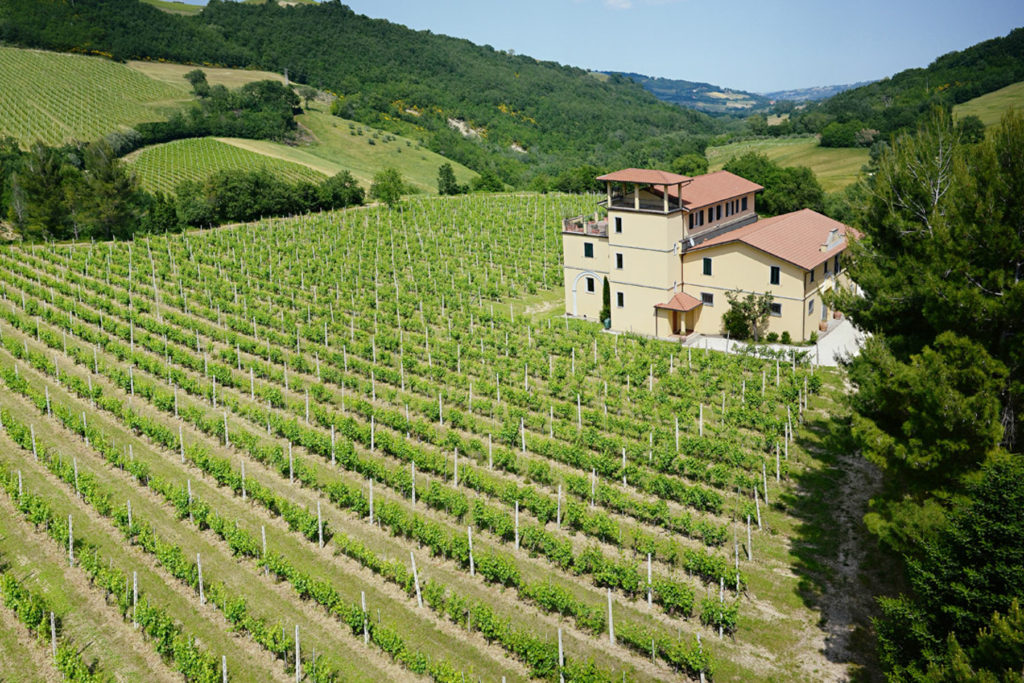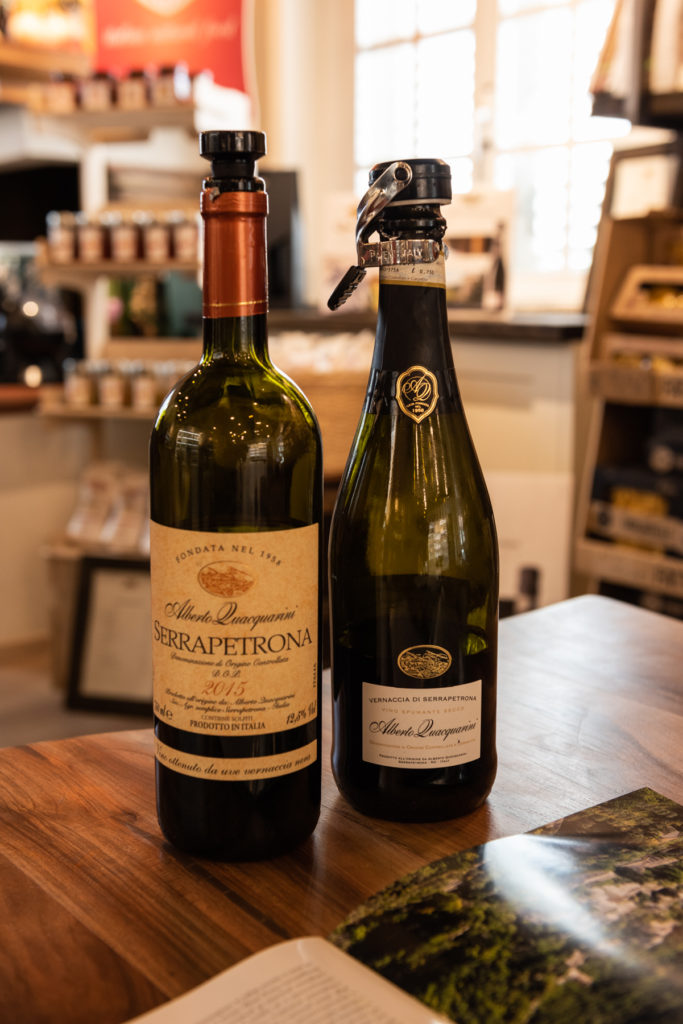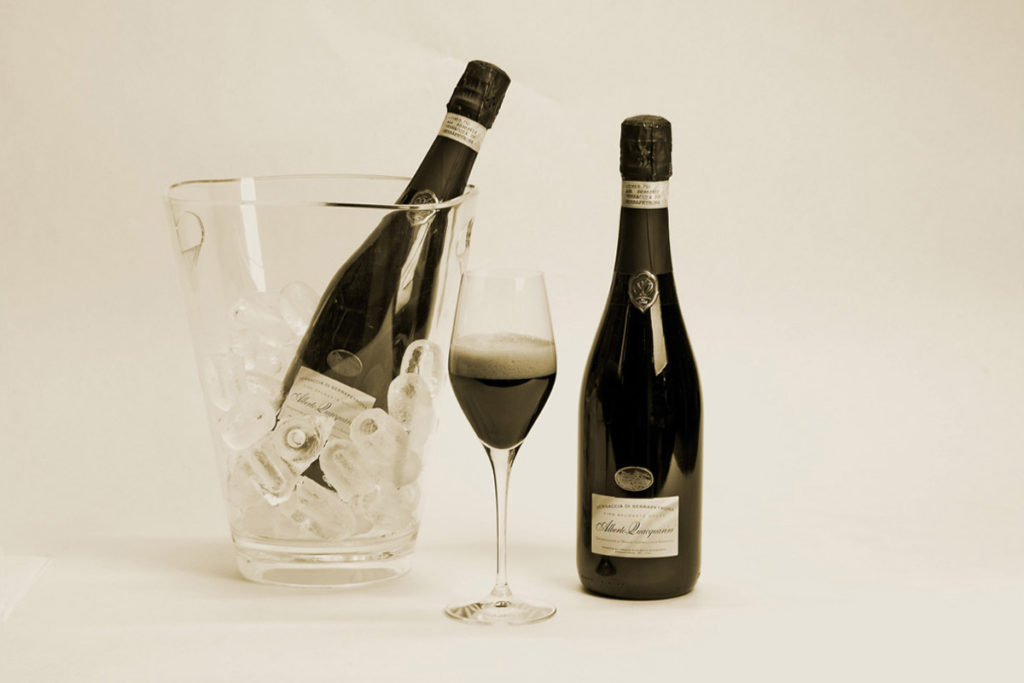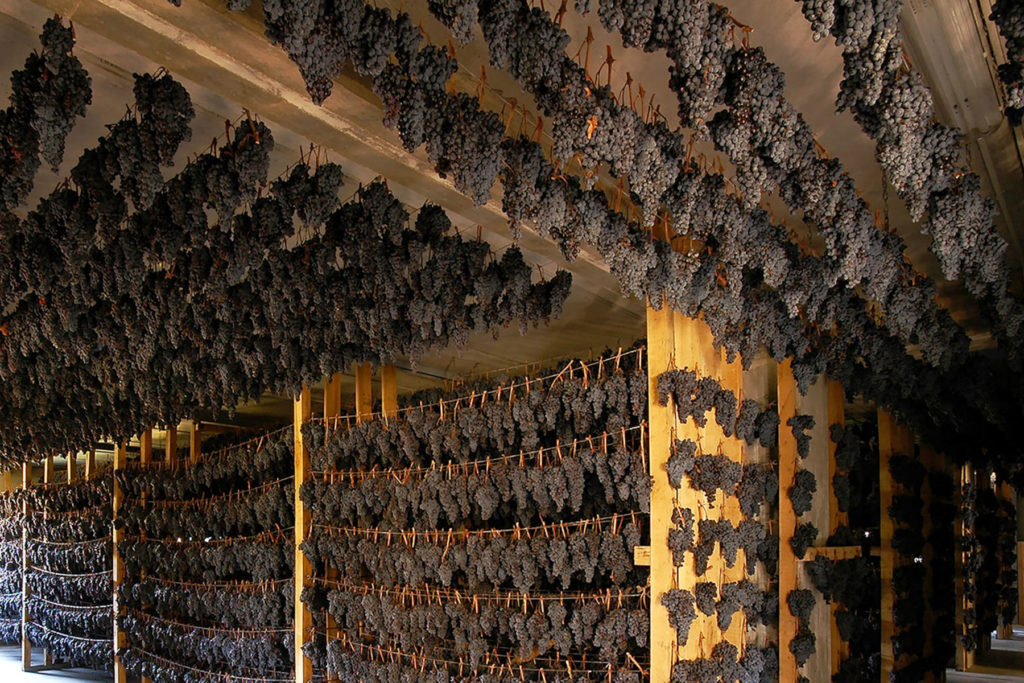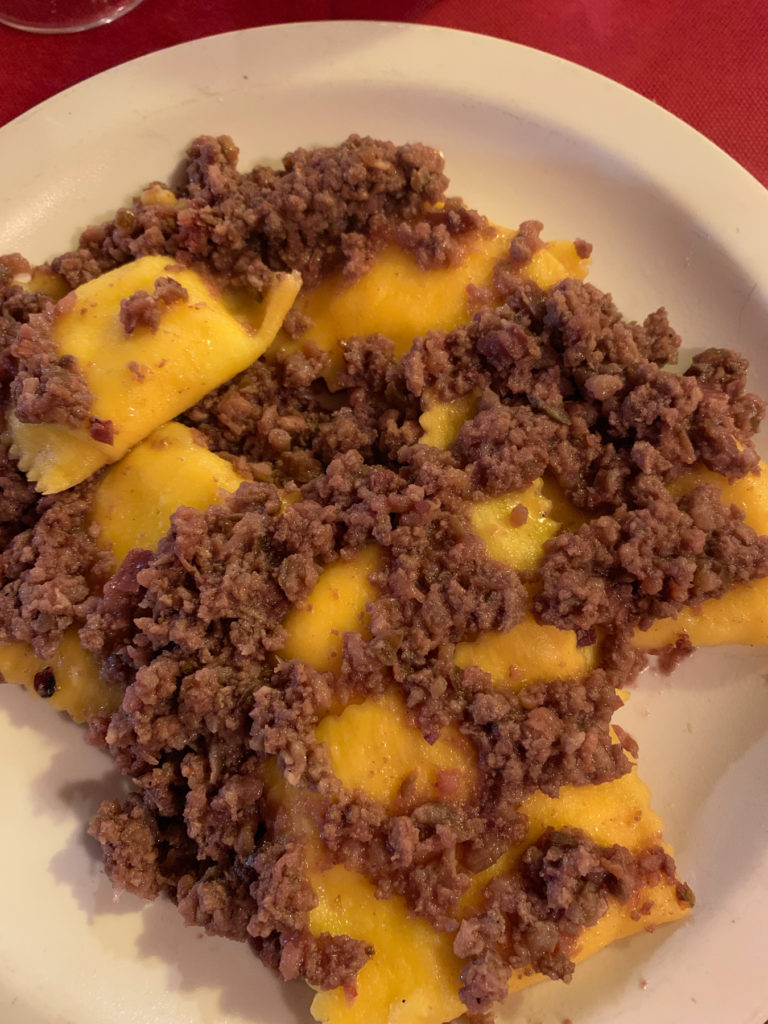Le Marche is hidden Italy—its cuisine is a secret treasure.
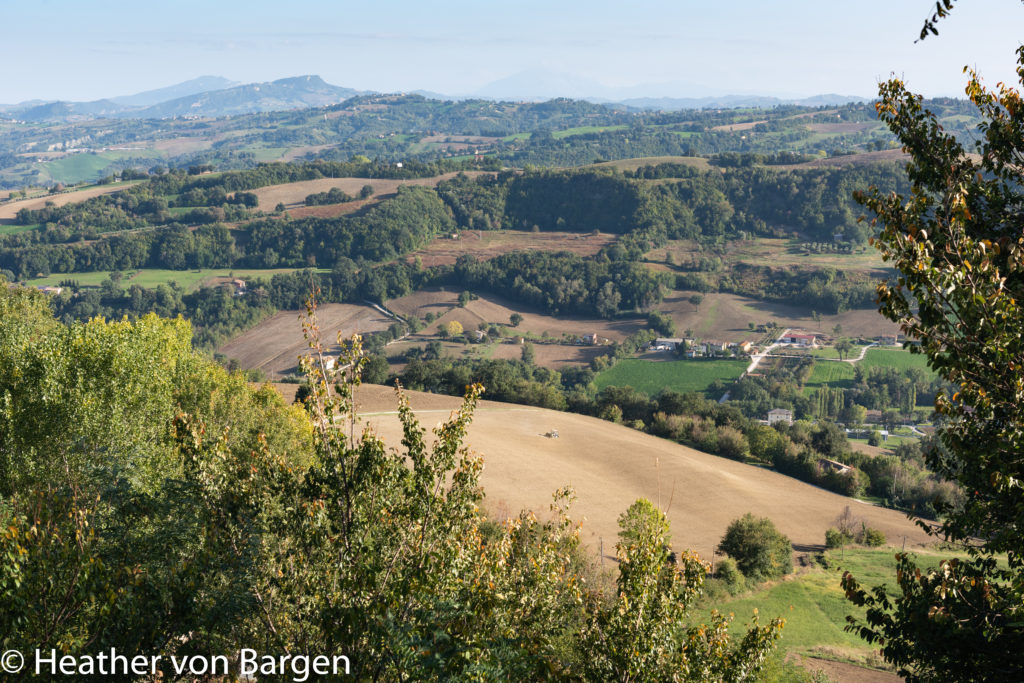
Le Marche’s locally focused cuisine is inspired by the abundant fresh fish from the Adriatic; the crops that grow and the animals that graze in the midland hills; and the wild game, nuts, and truffles that thrive in the mountains. The 0 km movement pervades Le Marche, although the region has eaten locally long before it became trendy.
If Le Marche was famous for its food, it would be thanks to typical dishes like the twelve-layered Vincisgrassi lasagna, stuffed and fried Ascolane olives, the spreadable sausage ciauscolo, pork-stuffed rabbit, or wild boar ragù. These dishes are best enjoyed in situ, and preferably, with someone else doing the work.
However, I have found a few typical Marchigiane recipes, made with readily available ingredients, that are so easy to make even I succeeded in bringing a little bit of Le Marche to my Florida table. Until your next trip to Le Marche, enjoy these recipes from my 8,338 km kitchen.
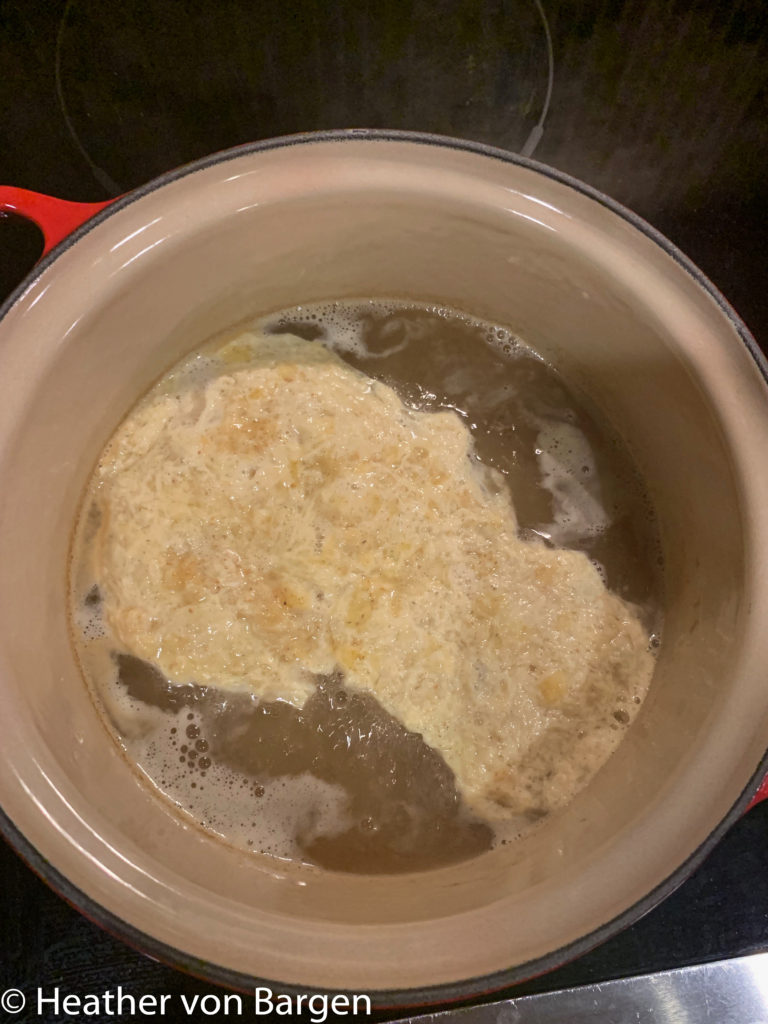
I first tasted the simple goodness of Stracciatella soup at Picciolo di Rame and combined recipes to come up with this one. It looks weird at first, but after stirring the egg drop, it literally falls into place.
Stracciatella Soup
6 cups high quality, organic chicken stock
2 large eggs
1/3 cup freshly grated Parmigiano-Reggiano. (You could substitute Pecorino.) Plus additional to serve.
2 Tablespoons breadcrumbs
½ teaspoon grated nutmeg
Squeeze of fresh lemon to taste (optional)
Freshly ground black pepper
Bring the chicken stock to a boil in a saucepan.
Beat the eggs, Parmigiano, breadcrumbs, and nutmeg in a bowl.
When the stock boils, reduce heat to a simmer.
Drizzle the egg mixture into the broth. It will float to the top. Give it a second to thicken.
Stir it up with a fork.
Serve in warmed bowls, add a spritz of lemon if desired, and top with more cheese and black pepper.
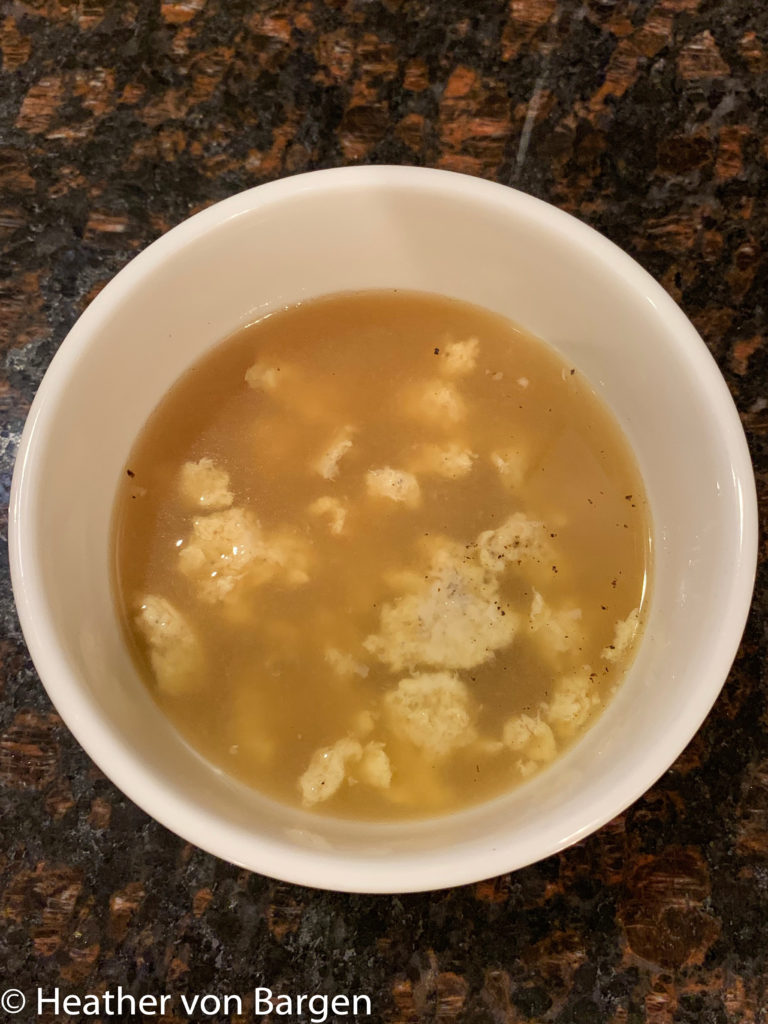
I served “Le Marche Risotto” at a dinner party and it was a hit with everyone. Its savory taste belies the ease to prepare, and the unexpected flavor combination is fancy-restaurant worthy. I found this recipe in the only English cookbook I’ve found about Le Marche: Cucina of Le Marche, by Fabio Trabocchi, who was born there. In the book, Chef Fabio writes that what makes this recipe Marchigiana is the cinnamon that: “reflects the long relationship Le Marche had with seafarers of North Africa and the spice traders of the East.” The recipe makes a huge portion. While it reheats very well, it’s easily halved. Pair it with a Verdicchio.
Le Marche Risotto
12 cups Chicken Stock, or as needed
12 Tablespoons (6 oz) unsalted butter, softened
¼ cup finely chopped onion
2 ¼ cups Carnaroli or Arborio rice
Kosher salt
1-¼ cups dry white wine, such as Verdicchio or Pinot Grigio
¼ cup grated mild Pecorino, plus more for serving
¼ cup freshly grated Parmigiano-Reggiano
¼ teaspoon ground cinnamon
Freshly ground black pepper
1 lemon
In a medium saucepan, bring the chicken stock to a boil. Reduce the heat and keep at a low simmer.
Melt 2 tablespoons of the butter in a large sauté pan over medium heat. Add the onion, reduce the heat to low, and cook slowly, stirring occasionally with a wooden spatula or spoon, until the onion is soft and translucent but has not browned. Add the rice and 1 teaspoon of salt and stir for 1 to 2 minutes to toast the rice. Add the white wine; increase the heat, and simmer, stirring constantly, until the pan is almost dry.
Ladle ½ cup of the simmering stock into the rice and stir constantly until it is completely absorbed. Continue cooking and adding stock ½ cup at a time, stirring constantly and letting each addition be absorbed before adding the next. After about 16 to 18 minutes, you should have added about 10 cups stock, the rice should be al dente, and the risotto should be quite thick and creamy. If the rice is not yet al dente, add more stock and continue cooking as necessary.
Remove the pan from the heat and gently fold in both cheeses, the remaining 10 tablespoons of butter, and the cinnamon. The risotto should be soft and creamy. If it seems too thick, add more stock a spoonful or so at a time. Season to taste with salt and pepper.
Using a Microplane or other fine grater, lightly grate lemon zest over each plate. Top with the risotto, finish with grated pecorino, and serve immediately.
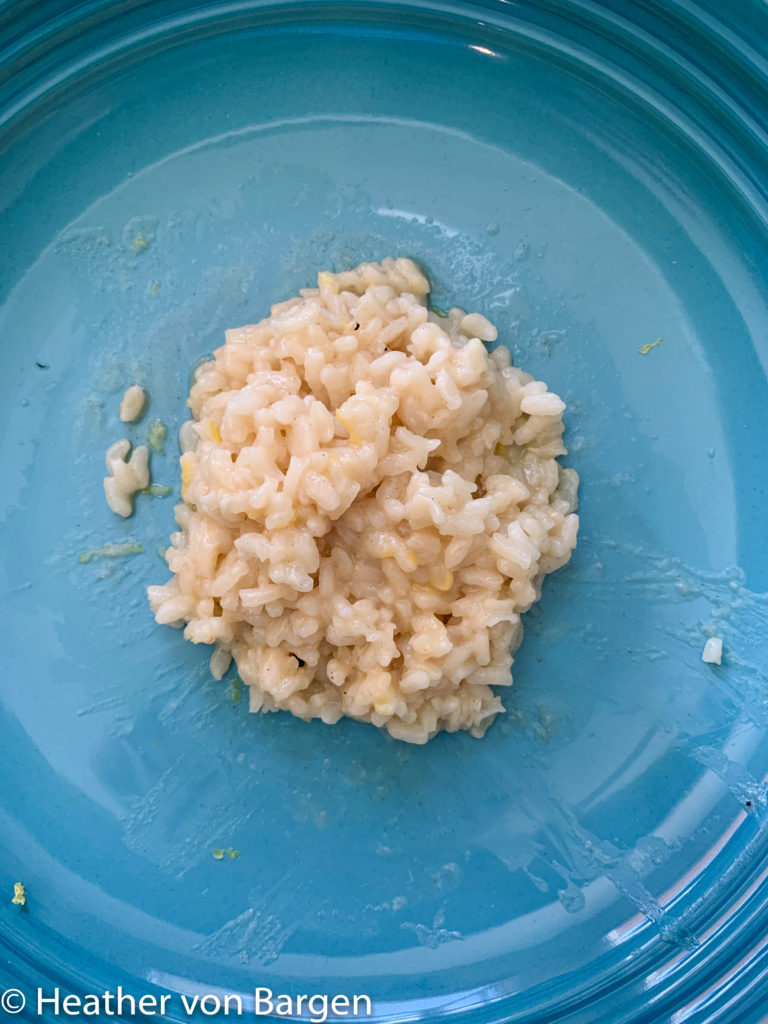
Giuseppe is Chef Fabio’s father and his grilled pork chop recipe is a crowd pleaser. In my travels throughout Italy, I have never seen more grilled food than in Le Marche. It’s inherent in their culture and many restaurants are designed around an open grill. Serve the grilled pork chops with a Rosso Piceno wine.
Giuseppe’s Grilled Pork Chops
6 pork chops, 8-12 ounces each, preferably organic
Kosher salt and freshly ground black pepper
1 orange
Grated zest of 1 lemon
3 garlic cloves, skin left on, crushed
Five 4-inch sprigs rosemary, leaves removed and finely chopped
3 whole cloves
¼ cup, plus 2 tablespoons extra virgin olive oil
Wipe the pork chops dry and lightly season with salt and pepper. Grate the zest of the orange into a small bowl. Add the lemon zest, garlic, rosemary, cloves, and olive oil. Mix well.
Put the pork chops in a baking dish and pour the marinade over them. Turn to coat, rubbing the marinade into the meat. Squeeze the juice of the orange over the chops, turn again, and cover tightly. (You can also marinate the chops in a resealable plastic bag.) Refrigerate overnight.
Remove the pork chops from the marinade and pat dry with paper towels. Discard the marinade. Place on a plate and let stand at room temperature for 30 minutes.
Meanwhile, prepare a charcoal fire or preheat a gas grill. Or preheat a cast-iron grill pan over medium-high heat.
Grill the pork chops for about 4 minutes per side, or until medium to medium-rare (they will continue to cook as they rest). Transfer the chops to a tray and let them rest for 10 minutes in a warm place before serving.
